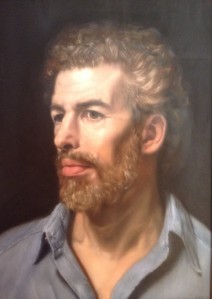In-Sight Publishing
Born to do Math 52 - Metaprimes (Part 18)
Born to do Math 52 - Metaprimes (Part 18)
Scott Douglas Jacobsen & Rick Rosner
April 28, 2017
[Beginning of recorded material]
Rick Rosner: Stars, it is easy to fuse raw protons, which are
Hydrogen nuclei, together. The easiest thing to do in a star is to fuse
Hydrogen into Deuterium, Tritium, and then Helium. Mostly. That takes the least
amount of pressure. It takes more pressure to turn Helium into stuff. As stars
cook down, they do a lot of stuff. They cool down, expand, and sometimes blow
off the outer shell. Depending on how much the various elements are in the star
depending on the size of the star, some stars can hang up to the point where
they are almost entirely Oxygen and Carbon.
That’s a smaller star. A
bigger star, the one the size of our Sun can keep cooking until it is almost
entirely Iron. But at some point, there’s no more energy to be gained from
being further cooked down and smushed down. Most stars stop, but some bigger
stars can keep going to become neutron stars, and can be mushed down – probably
not the right thing to say – and they are kind of one big nucleus.
Other stars can keep
going from that point until they are a blackish hole. Iron is the last element
that you can produce as a huge percentage of the mass of a star. The elements
beyond Iron are kind of produced in like artisanal batches by supernova
explosives, where the pressure wave pushes through heavy nuclei and smushes
them further together, but the curve of binding energy. It is the curve of how
much energy it takes per nucleon – per proton and neutron—
It is the binding energy
there is released for each nucleon in that nucleus. It reaches a peak at Iron.
To get any heavier elements, you will not be creating energy. There will not be
any large scale burning. That’s how heavier elements are formed, in the
interior of stars as they boil themselves down and then explode.
[End of recorded material]
Authors[1]

Rick Rosner
American Television Writer
RickRosner@Hotmail.Com
Rick Rosner

Scott Douglas Jacobsen
Editor-in-Chief, In-Sight Publishing
Scott.D.Jacobsen@Gmail.Com
In-Sight Publishing
Endnotes
[1] Four format points for the session article:- Bold text following “Scott Douglas Jacobsen:” or “Jacobsen:” is Scott Douglas Jacobsen & non-bold text following “Rick Rosner:” or “Rosner:” is Rick Rosner.
- Session article conducted, transcribed, edited, formatted, and published by Scott.
- Footnotes & in-text citations in the interview & references after the interview.
- This session article has been edited for clarity and readability.
- American Psychological Association. (2010). Citation Guide: APA. Retrieved from http://www.lib.sfu.ca/system/files/28281/APA6CitationGuideSFUv3.pdf.
- Humble, A. (n.d.). Guide to Transcribing. Retrieved from http://www.msvu.ca/site/media/msvu/Transcription%20Guide.pdf.
License
In-Sight Publishing and In-Sight: Independent Interview-Based Journal by Scott Douglas Jacobsen is licensed under a Creative Commons Attribution-NonCommercial-NoDerivatives 4.0 International License.
Based on a work at www.in-sightjournal.com and www.rickrosner.org.
Copyright
© Scott Douglas Jacobsen, Rick Rosner, and In-Sight Publishing and In-Sight: Independent Interview-Based Journal 2012-2017. Unauthorized use and/or duplication of this material without express and written permission from this site’s author and/or owner is strictly prohibited. Excerpts and links may be used, provided that full and clear credit is given to Scott Douglas Jacobsen, Rick Rosner, and In-Sight Publishing and In-Sight: Independent Interview-Based Journal with appropriate and specific direction to the original content.
No comments:
Post a Comment